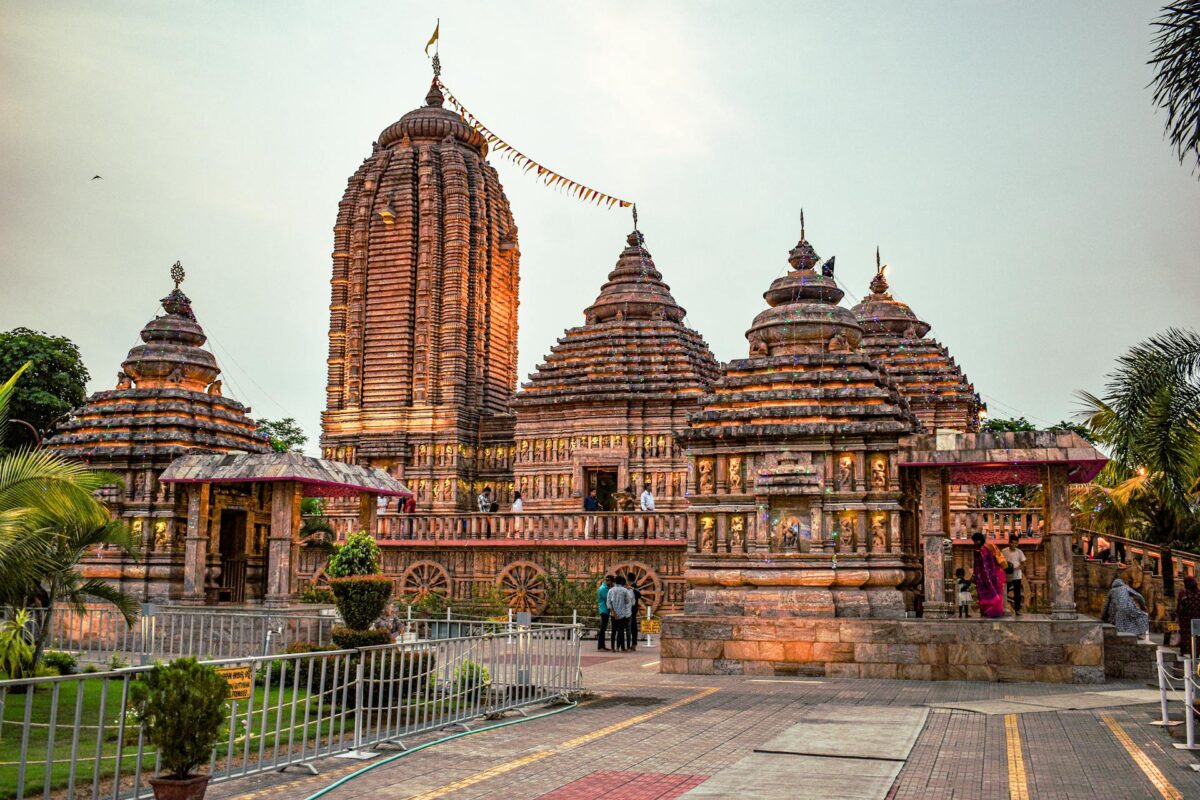Jagannath Temple
A beacon of faith and tradition, the Jagannath Temple is where the divine presence of Lord Jagannath is felt in every corner, inviting devotees to experience spiritual bliss.

Jagannath Temple of Puri: The Heart of Devotion and Cultural Heritage
| Deity: | Jagannath (Vishnu) |
| State – City: | Puri, Odisha |
| Best time to visit | June, July and October-February |
| Open Hours | 5:30 am – 9:00 pm |
| Popular festival | Rath Yatra |
FAQ
Where is Jagannath temple located?
Puri, Odisha
What is the origin or historical significance of the Jagannath Temple?
The construction of the Temple of Lord Jagannath was started in the 12th century in the year 1136 AD and the construction of the temple was completed in the last of the 12th century i. e. 1150 AD.
The temple was built by King Anantavarman Chodaganga Deva of the Eastern Ganga Dynasty, who was a devout follower of Lord Vishnu. His reign marked the golden age of Odishan temple architecture.
In terms of history, the temple holds an important position in the context of the evolution of Orissan temple architecture.
Who built or upgraded the Jagannath Temple?
It was constructed by the Kalinga King Anantavarman Chodaganga Deva initially. Temple has been renovated numerous times over the years in order to preserve it and to accommodate more and more devotees. New structures underwent substantial modifications in the 16th century by the Kings of Odisha and later by the Marathas.
What are the cultural or mythological references associated with the temple?
Popular accounts have it that the temple was founded by King Indradyumna of Malwa after he dreamt of Lord Vishnu instructing him to build the temple. This temple is also known for Navakalevara ritual where wooden icons of Lord Jagannatha, Lord Balabhadra and Goddess Subhadra are replaced after every 12 or 19 years. Part of this tradition includes a burial of the old idols and carving new ones from neem wood that is considered sacred.
What are the unique points about the Jagannath Temple?
The Jagannath Temple has several unique aspects:
- Patitapaban Bana: The temple uses a different flag each day and it is astonishing that the flag is waving opposite to the wind direction.
- Non-Casting Shadow: It has been observed that the main domed portion of the temple does not shed its shadow even at midday.
- Nilachakra: The temple has a dome that holds Ashta Dhatu which is a wheel made from eight types of metals for it is considered sacred by devotees.
- Seven Protected Walls: The temple complex is surrounded by seven concentric walls called Sapta Prakaram, each with a defensive purpose.
Why is the Jagannath Temple famous?
The Jagannath Temple is considered to be sacred and has many rituals and customs associated with it. It is one of the places for the Char Dham pilgrimage and therefore it is a prominent place for devotees.
Mahaprasad is the sacred food offered to Lord Jagannath and later distributed among the devotees. It is considered extremely holy and is believed to purify those who partake in it.
- Preparation: The Mahaprasad is cooked in the temple kitchen, which is considered to be one of the largest kitchens in the world. Around 500 cooks prepare food in earthen pots on wooden stoves. The food is prepared in strict adherence to traditional methods and is cooked in seven pots stacked on top of each other. Miraculously, the pot at the top cooks first, and the one at the bottom cooks last.
- Offerings: The Mahaprasad includes a variety of rice dishes, dal, vegetable curries, and sweets. It is offered to Lord Jagannath in the main temple and then distributed in the Ananda Bazaar (market of joy) within the temple premises.
What is unique about the temple’s architecture?
The structure and carving of the Jagannath Temple depict the Kalinga style of architecture where Puri temple has a pyramidal roof. The main spire of the building which is around 65 meters has been designed in a unique architectural style. This building also has some unique scientific features including the magnetic field of the Nilachakra and the direction of the wind in Puri.
When is the best time to visit the Jagannath Temple?
The best time to go to the Jagannath Temple is during the celebration of the Rath Yatra, which happens during the months of June and July. The other suitable season for travelling is October-February since the weather is good for visiting places of interest and performing religious trips.
How can one reach the Jagannath Temple?
The Jagannath Temple is well-connected by various modes of transportation:
- By Air: The nearest airport is Biju Patnaik International Airport in Bhubaneswar, located approximately 60 km from Puri. From the airport, one can hire a taxi or take a bus to reach the temple.
- By Train: Puri has its own railway station, which is well-connected to major cities in India. Regular trains run to Puri from cities like Bhubaneswar, Kolkata, and New Delhi.
- By Road: Puri is well-connected by road with regular bus services from Bhubaneswar, Cuttack, and other major cities in Odisha. One can also drive to Puri via National Highway 316.
The Jagannath Temple is not just a place of worship, but it is a journey into the reality of Hinduism and the extraordinary architecture of Orissa. In terms of purpose, the temple may be visited to find solace, to meditate, or merely to visit a place of historical and cultural importance; in any of these cases, the experience is enlightening.







